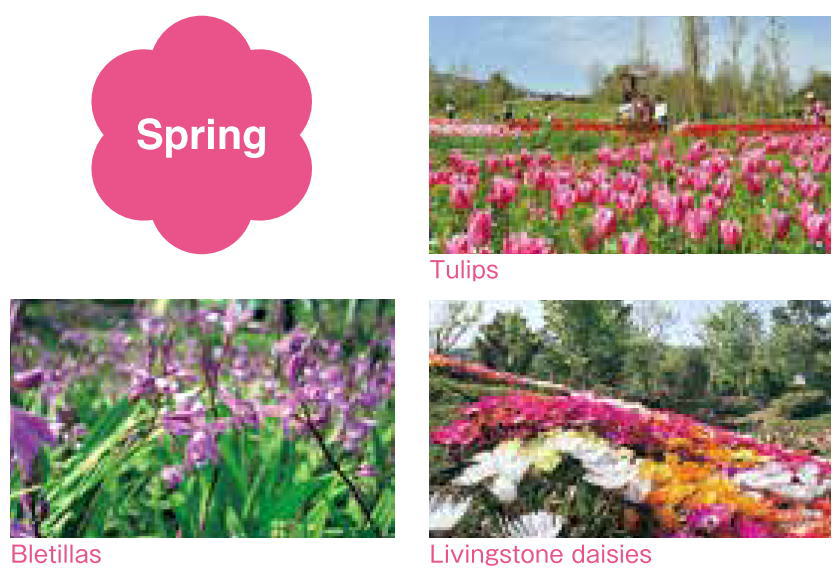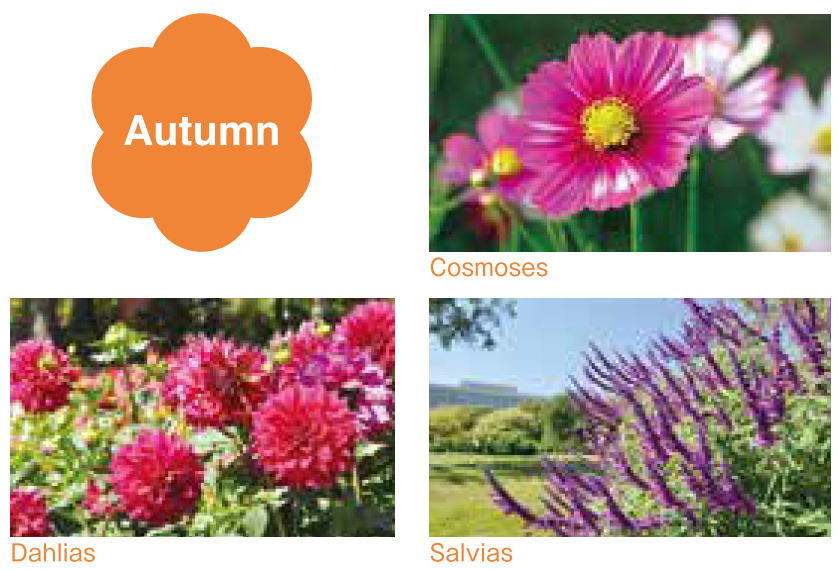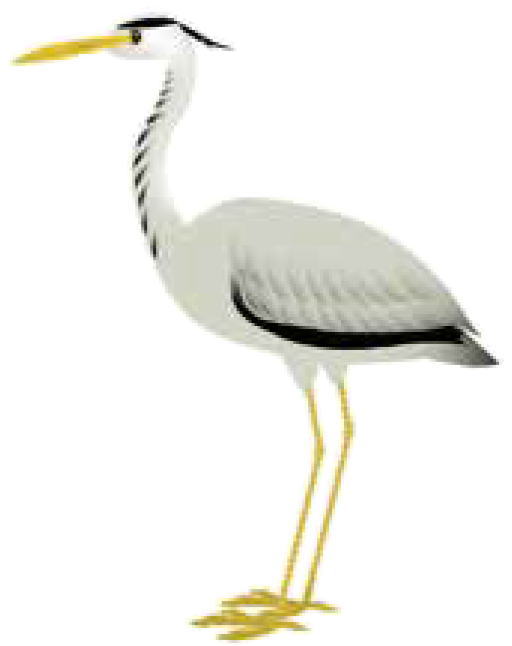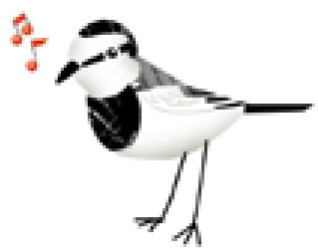Flowers&Birds
Flowers
Spring
●Cherry blossoms ●Bletillas ●Narcissi ●Tulips ●Nemophilas
●Mimosas ●Grape hyacinths ●Thunberg's meadowsweets
●Livingstone daisies/Weeping golden bells

Summer
●African lilies ●Hydrangeas ●Cockspur coral trees
●Busy lizzies ●Crape myrtles ●Fireman’s caps
●Chinese trumpet creepers ●Sunflowers ●Cotton roses
●Purple loosestrifes ●Roses of Sharon

Autumn
●Cherry blossoms ●Bletillas ●Narcissi ●Tulips ●Nemophilas ●Mimosas ●Grape hyacinths ●Thunberg's meadowsweets ●Livingstone daisies/Weeping golden bells

Winter
●Cherry blossoms ●Bletillas ●Narcissi ●Tulips ●Nemophilas ●Mimosas ●Grape hyacinths ●Thunberg's meadowsweets ●Livingstone daisies/Weeping golden bells

Birds

Japanese green pheasant (Phasianidae)
The green pheasant is designated as Japan’s national bird. It is about 80 cm in length. It is a permanent resident bird inhabiting forests, grasslands, and crop lands. The male has a long tail, a green chest and belly, a red face, and brown coverts with a scale-like pattern. The female is almost all brown and has a shorter tail. You may hear males crowing in spring.

Grey heron (Ardeidae)
The grey heron is the largest heron in Japan with a length of about 95 cm. Adult herons have black crown feathers on the head and a yellow bill and legs. There is no difference in color between males and females. Grey herons are often seen standing in water ambushing fish. In general, they locate their colonies in forests in hilly or coastal areas and build nests on the top of high trees.

Japanese bush warbler (Muscicapidae, Sylviinae)
Bush warblers are sometimes heard warbling distinctive notes, but they are rarely seen as they prefer hiding in bushes. The bush warbler is a little slimmer than the sparrow. The bush warbler is olive brown in color (different from the color of the Japanese cake named after the bird).
♦You may observe bush warblers in the Promenade Garden of Awaji Yumebutai.

Wild duck (Anatidae)
The wild duck is about 60 cm in length. It is a migratory bird that visits Japan during winter. The male has a green head with a white ring around the neck, a brown chest, and dark upper tail coverts curled at the end. The female is almost all brown. The wild duck is also called as "aokubi" (which literally means "blue neck") and regarded as the most delicious duck. Most domestic ducks are descended from wild ducks.

White wagtail (Motacillidae)
The white wagtail is about 21 cm in length and has a long tail and a white face with black eye stripes. Inhabiting rivers and coastal lagoons, white wagtails are often seen flying with their tails swinging up and down. In their summer plumage, males have black coverts and a prominent black spot on the chest, and females are a little light in color. In their winter plumage, both males and females become greyish in tone.

Ringed plover (Charadriidae)
The ringed plover is a small variant of the plover, which is comparable to the sparrow in size. Ringed plovers build simple nests on river shores and reclaimed land and lay pebble-like eggs. Both males and females have yellow rings around their eyes. They waddle around looking for insects. A Japanese phrase "chidori-ashi" (tottering steps) is named after the steps of plovers, which are called “chidori” in Japanese.
*"How many nights would the chirping of plovers migrating from Awaji Island break the slumber of the gatekeepers of Suma?" This is a poem from the Collection of One Hundred Poems by One Hundred Poets. The plovers in the poem are Kentish plovers, which are a little bigger than ringed plovers. Kentish plovers are permanent resident birds, while ringed plovers are migratory birds visiting Japan during summer (some of the ringed plovers also stay in Japan during winter).
